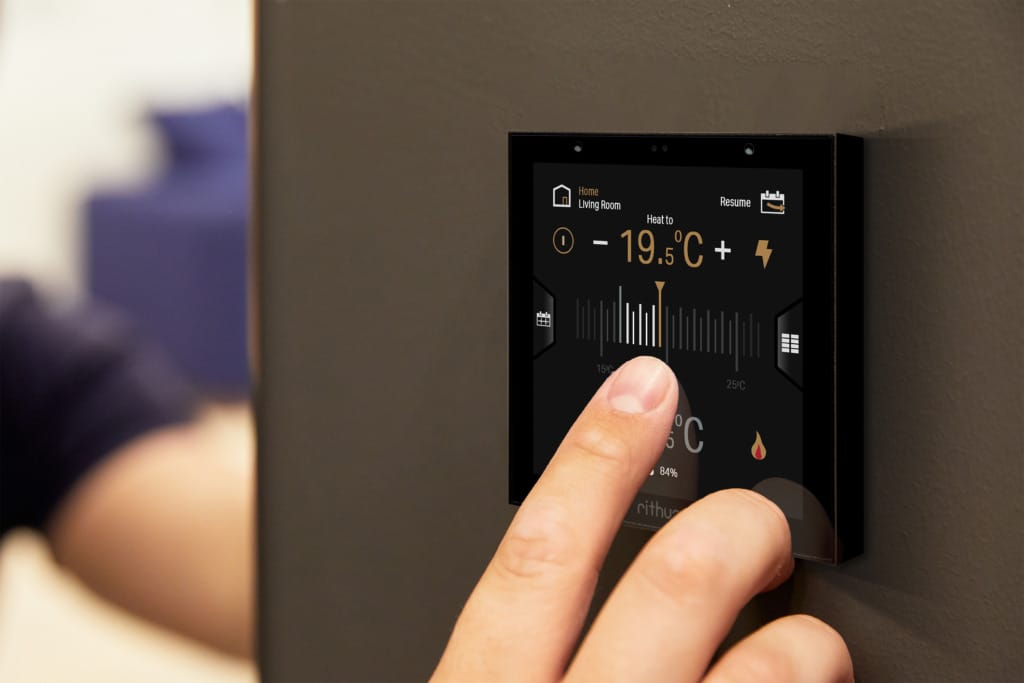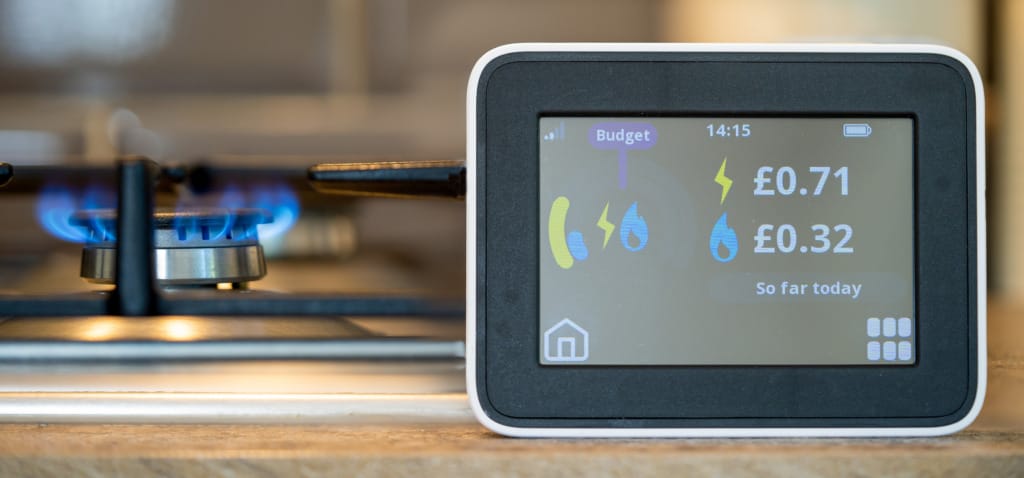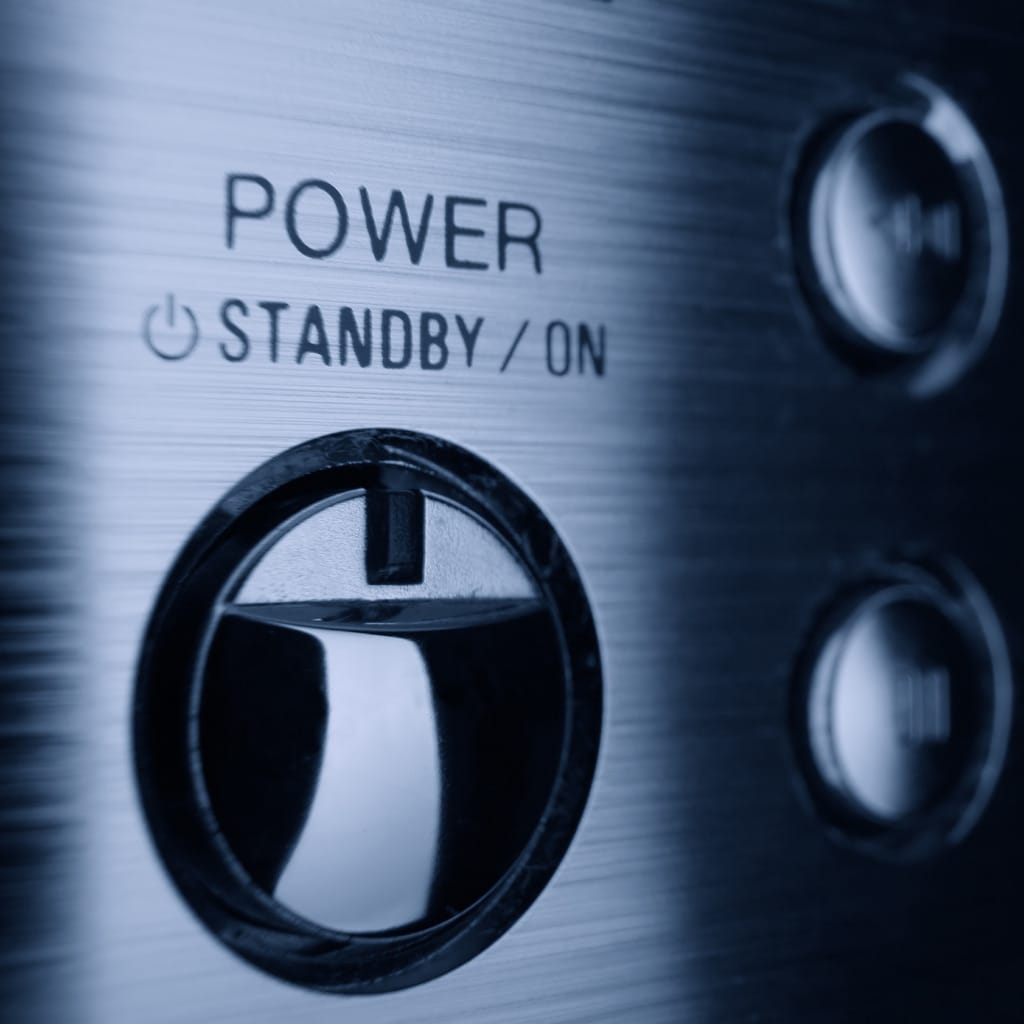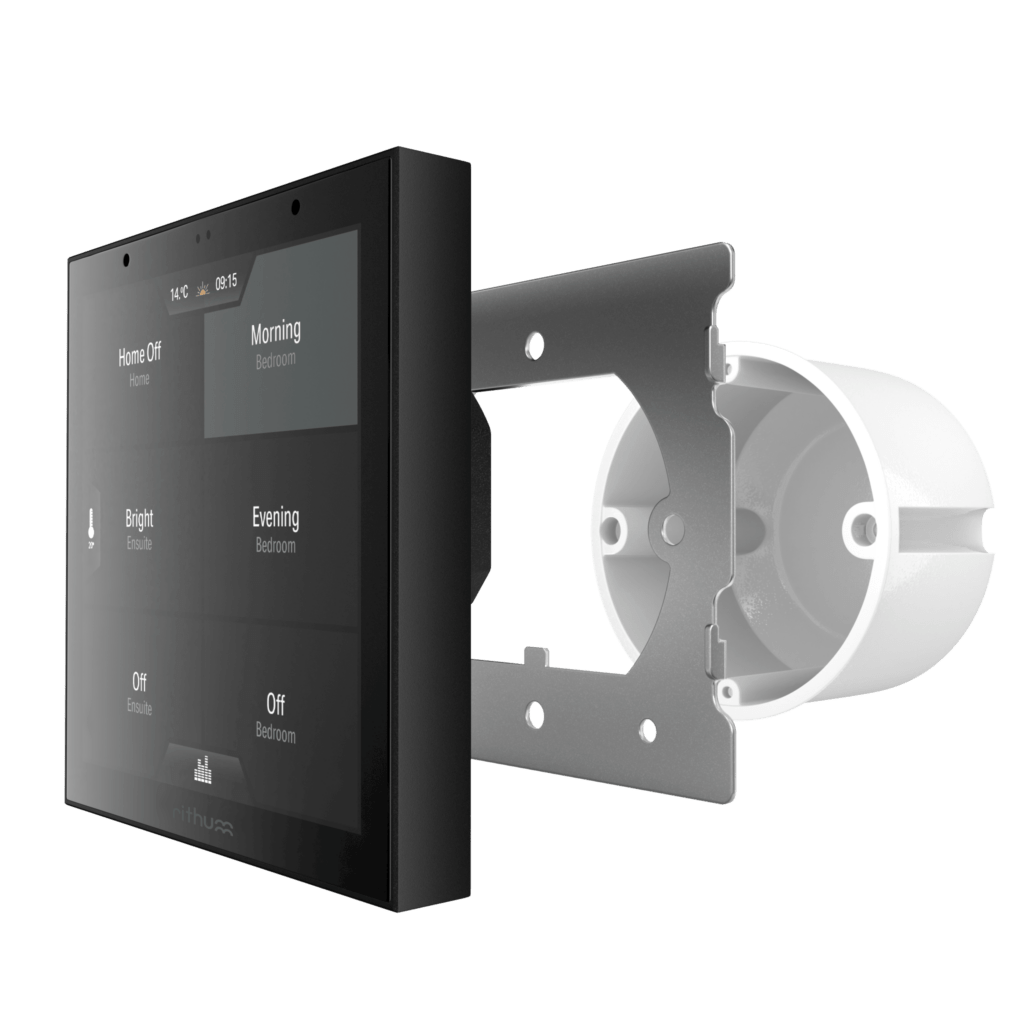Ready to start lowering your energy bills? Let us introduce you to smart home energy savings and explain exactly how technology can help you bring down your energy usage and save you money.
Energy prices in the UK increased in April and again in October 2022. With bills rising, and a cost-of-living crisis in full swing, you are probably looking for new ways to cut down on your energy usage. In this article we will look at how smart home technology can help you make a dent in your monthly energy bills.
Take control of your heating with a smart thermostat

When it comes to smart home energy savings, smart thermostats are the first device that most people come across. Smart thermostats give you a nifty way to control your home heating on the go.
They have a reputation for being an excellent way to save cash by reducing your energy usage, and it’s well deserved.
Being able to monitor and track home energy use with a smart thermostat will give you valuable information about your current energy consumption patterns.
Thermostats can be adjusted to reduce the heating in winter, or limit the AC in summer. A smart thermostat will give you highly accurate readings with detailed information that will help you assess where your energy consumption is worst. You can then adjust your habits accordingly.
Smart thermostats also integrate into your smart home system allowing for easy control of your home’s climate. For example, with Rithum Switch and its built-in temperature sensor, you can make quick climate adjustments. The climate screen allows you to quickly turn on, turn up, and turn off your heating as well as allowing you to see the current temperature. Or, using its built-in scheduling screen you can plan ahead with up to 8-time blocks per day meaning the heating is only on when you need it.
Turn your heating down by just a single degree
Smart thermostats give you more precise control of your heating which is more valuable than you first might think. When you are looking to cut costs on your energy bills, every degree counts. According to research by uSwitch, turning your central heating down by only 1°C could result in an annual cost saving of up to £128.
For example, Tado° is a smart home heating system that integrates with the Rithum Switch and allows you to easily control your home’s climate. You can reduce your heating costs when you’re not at home as Tado° Geofencing detects when you leave your home and reminds you to turn down the heating. Not only that, but Tado° also monitors the weather. When the sun is shining it knows your temperature will be higher and will adjust its setting accordingly.
Control the temperature of every room individually with smart heating TRVs
Thermostatic radiator valves (TRVs) are another device that can help you control the individual temperature in each room of your home. Traditional TRVs are attached to radiators and manually adjusted. But smart TRVs are also available to integrate into your smart home system.
With smart TRVs, you can prevent each room in your home from overheating and stop your boiler from heating a room that is already warm or not in use. They can be integrated into your smart home by attaching to your radiator which allows you to control them with your smart thermostat, giving you quick and simple access to heating control in every room.
For example, with the Rithum Switch, you could control your Tado° home heating system, which has smart TRV’s included. The smart valves are typically fitted to the hot water radiators in your home, replacing the existing TRVs. Then simply connect them to the internet using Wi-Fi.
There are a lot of opportunities to cut your energy usage with TRVs. For example, you can:
-
- Save energy while you sleep by heating only the bedrooms and lowering the temperature in the other rooms of your home
-
- Heat the bathroom before you get up for a shower, without heating the rest of your home.
-
- Turn down the heating in the kitchen while you are cooking
Swap out your incandescent light bulbs for smart light bulbs
Heating is not the only major consumer of energy in the home, there is also your electric bill to think about. You can start to see smart home energy savings in your electricity bill by switching to smart bulbs, such as Philips Hue.
Light bulbs are typically thought of as low-consumption electronics, so is there any cost savings from switching to smart bulbs?
The research indicates that, when compared with incandescent bulbs, there is.
Different light technologies use different amounts of electricity. Studies have found that the current generation of LED light bulbs is around 75% more efficient than traditional incandescent light bulbs. And all smart bulbs are LED.

Through the long winters when the sun goes down at 4 PM and you have your lights on for most of the day, you will quickly see savings accumulate if you switch from incandescent to smart bulbs.
Smart lighting needs a smart control system
Smart bulbs offer more than simply LED light. A smart light bulb also connects to your smart home network and can be controlled remotely via your smart home panels, such as the Rithum Switch, or app. They take the place of your old-school lighting and bring with them not only energy savings but also more functionality.
Many smart bulbs can be dimmed or change colour. Most can also be set to turn on or off at certain times or under specific conditions, also helping to reduce energy consumption. Philips quote their smart Hue bulbs can reduce energy consumption by 19% simply by dimming them by 10%, or save a huge 54% by swapping from white to yellow toned light.
When it comes to reducing your expenses on your home energy costs, every little bit counts. Pennies add up to pounds, and before you know it, you’ve saved a hundred or more with little effort.
How much energy does a smart bulb use when off?
Smart bulbs clearly save energy in comparison to traditional bulbs. But a concern many people have is how much energy they use when they are off, or on standby. So, is it a lot?
Not really. According to How-To-Geek, the average smart bulb only uses pennies a month when in standby mode. If you have smart bulbs in your home, you probably wouldn’t even notice it on your electric bill and you will still see greater savings in comparison to incandescent lights.

Install a smart meter to monitor your energy
Another great energy saving device for your smart home is a smart meter.
One of the great things about smart meters is that most energy companies give them out for free. You can then quickly and simply integrate them into your smart home at no or low cost.
The smart meter itself will typically use a secure smart data network to automatically and wirelessly deliver your energy meter readings to your provider. This will normally happen monthly but sometimes more frequently, depending on your supplier.
Another element of a smart meter that can help you with energy savings is an in-home digital display. This will show you how much energy you’re using, at what times, and how much it costs.
The energy usage information that is taken regularly from your smart meters can help you change your habits and know where you can make savings.
For example, if you can see that your usage is higher on certain days or times you can examine why that is and if it is something that can be reduced. Or, you may notice that certain appliances use more electricity than you thought and can then be more conscious when using them.
Smart meters also mean an end to inaccurate energy bills. Your energy supplier will always have an accurate reading of your home’s usage so you will no longer have to work with estimates.
It is possible that in the future, having a smart meter will also help you to take advantage of tariff changes at different times of the day.
This is when an energy supplier will charge you less to use energy at specific times or on specific days. It is also possible that in future some suppliers may incentivise electricity usage in certain conditions, for example, on a windy day, when there’s a lot of energy generated by wind farms.
While these tariffs are still not commonplace, they are being used by some companies and it is a model we could see more of in future. For example, currently, Octopus Energy has an Agile plan that uses tariffs for its pricing model.
Get out of the standby habit with smart plugs
Speaking of reducing electricity usage, another smart home energy saving device that is less talked about is smart plugs. Research from energy provider British Gas shows that households can save around £147 per year by fully switching off all electrical devices when they’re not in use.
Nicknamed ‘vampire devices’, electronic devices that use power when they are on standby could be raising the cost of your energy bills.
When smart plugs are added to a smart home system such as Rithum, within a particular zone users can easily power devices on or off with a single tap or set schedules. This ensures that your devices aren’t left on standby, consuming electricity when they are not being used.

With the Rithum Switch, you can control your smart plugs via integrations such as Fibaro or Rako. The Rithum switch provides control of these systems via software plugins which can be purchased and easily installed by the user at home. Consolidating control of multiple systems into one device is much more convenient for the user, and therefore can help them to break the standby habit and save energy.
Avoid accidental fires
Another advantage of smart plugs is that they can make your smart home safer. Have you ever gone to work, and are suddenly wondering whether you turned the electric heater off before you left the house? With a smart plug, you can rest assured that your appliance is turned off and will not accidentally set your house on fire.
Smart home energy saving statistics
Smart home energy saving statistics show that smart homes really are able to help you cut costs. Let’s take a look at the numbers and how a smart home saves energy.
-
- There are 2.22 million smart homes in the UK.
-
- Turning your house into a smart home can reduce your energy usage by around 30%, according to the Connected Devices Alliance.
-
- A 2018 YouGov survey showed that ease and convenience were the top advantages of having a smart home. In the UK, 38% of people said: “They make my life easier.”
-
- Nest Labs released a smart thermostat study that found the average household could save 10–12% on heating costs and 15% on cooling by using a smart thermostat.
-
- All smart bulbs are LED bulbs, which use at least 75% less energy than incandescents yet last 25 times longer.
-
- They also bring extra savings by adding dimming, which can save another 40%.
-
- All smart bulbs are LED bulbs, which use at least 75% less energy than incandescents yet last 25 times longer.
-
- According to the EPA, everyday household leaks account for about 1 trillion gallons of wasted water annually. That’s equivalent to over 1,500 Olympic-size swimming pools.
-
- Adding a smart leak sensor is an easy way to monitor under sinks, behind toilets, around washing machines, and other potentially leaky points.
-
- According to the EPA, everyday household leaks account for about 1 trillion gallons of wasted water annually. That’s equivalent to over 1,500 Olympic-size swimming pools.
-
- Using a modern, smart irrigation system can help you save between 25-50% on your water bills. Upgrading to these systems quickly pays for itself.
How much energy does a smart home save?
The numbers speak for themselves. As we can see from the statistics listed above, a smart home can reduce energy usage in your home by around 30%.
Every device presents different saving opportunities. Smart thermostats are an obvious place to start and could help you save around 10–12% on your heating. But you can also look at smart plugs that will prevent ‘vampire devices’ sucking electricity when on standby. Or maybe if you have a large garden, you can look at using a smart irrigation system that will help you reduce your water usage.
The possibilities for energy savings in a smart home are numerous and you simply need to look at the devices available and which ones will be of best use in your home.

Make daily tasks simple with smart appliances
Smart home energy-saving strategies don’t only need to focus on cutting costs. They can reap other benefits too. Namely helping you save time and effort by automating tasks from your day.
For example, maybe the first things you do in the morning are open your blinds and make a coffee. Or maybe you often forget what you need to buy at the supermarket and don’t realise when you have run out of milk at home.
Can you automate all of these processes to remove a bit of hassle from your life? The truth is that home automation allows you to optimise your resources and there are devices you can connect to your home network that help with all of these things.
For example, you could use smart appliances to:
-
- Wake you up: No blaring alarm, instead have your smart home speaker gently wake you with music, a story or your favourite radio station.
-
- Turn on the lights: Use your smart plugs or smart bulbs to turn on the lights or the lamp on your bedside table when you wake up.
-
- Warm up your home: Set the smart thermostats so that you don’t wake up to a freezing home.
-
- Make your coffee: Smart coffee makers exist and you can set them with a routine that means your coffee starts brewing as you wake up.
With so many areas of day-to-day life that can be optimised by smart home technology – from smart home energy savings to increased productivity with morning routines – they are now growing in popularity.
Start saving energy with smart tech
Rithum Switch is a smart home control panel that combines your lighting, audio and climate control into one simple control point. You can control one room or the whole house at the touch of a button and set routines for your heating, lighting and other appliances. You can use Rithum Switch to organise and control your smart home devices and put them to the goal of helping you save on energy.
Learn more about the Rithum Switch here.
Smart home energy FAQ
How much energy does a smart home save?
Turning your house into a smart home can reduce your energy usage by around 30%.
Does a smart home reduce energy consumption?
Smart home devices such as thermostats and lighting are highly efficient and can reduce energy consumption because they can quickly and automatically be adjusted to change with your energy needs.
What is smart energy saving?
Smart energy saving is the process of using smart devices in your home to reduce your energy consumption.
Can you save energy with a smart home?
Your energy consumption can be significantly reduced when you start using smart devices such as thermostats and smart bulbs in your home.







